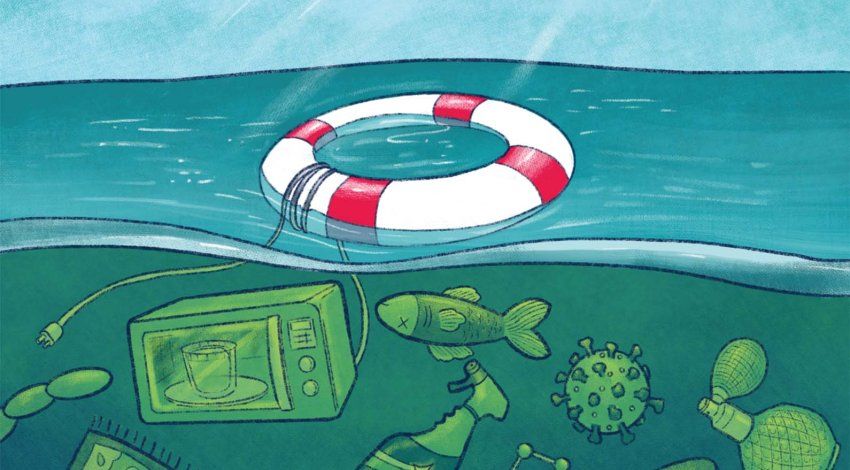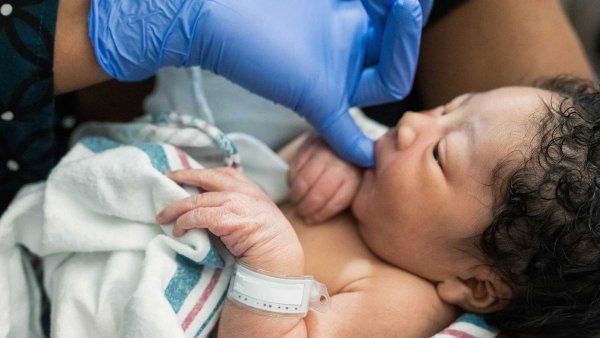
How Much Can We Control Our Own Fertility?
People trying to conceive are bombarded with advice meant to improve their odds. But how much power do we really have over our fertility?
Animation: Farah Hamade
Nearly one in five American women experience infertility, meaning they’re unable to become pregnant after at least a year of trying to conceive, or six months if they’re age 35 or older.
Should they cut the caffeine? Or take up yoga to de-stress? An infertility diagnosis can lead some hopeful parents to search for ways to boost their odds of getting pregnant. But despite the medical advances of recent decades, it’s not always possible to improve on our basic biology.
We asked UCSF fertility experts what we should focus on – and what’s beyond our control.
MYTH #1
If I’m healthy and fit, then my age doesn’t matter to my fertility.
Unfortunately, this myth is false.
Age is the most important driver of a woman’s fertility, says Marcelle Cedars, MD, who directs UCSF’s Division of Reproductive Endocrinology and Infertility. “The ovary,” she says, “seems to have its own clock.”
Aside from major health risk factors, such as obesity or drug use, the general health of someone who’s trying to conceive has little bearing on their eggs’ quality – that is, an egg’s ability to be fertilized and create a viable embryo.
Eggs begin to age from the moment a person is born, so a 40-year-old will have four-decade-old eggs, even if they exercise enough to have the cardiovascular fitness of someone half their age. By age 42, some 80% of an individual’s remaining eggs are considered abnormal.
“It’s kind of our modern tragedy,” says Diana Laird, PhD, a professor of obstetrics, gynecology, and reproductive sciences whose research at UCSF focuses on aging and sex cells of laboratory mice. “The ovary is the first organ that appreciably and functionally ages.”
Yet many of the chromosomal abnormalities in an individual’s eggs are present before they are even born. “An egg starts growing when you’re only about four weeks old in the womb,” Laird says. “This is an incredibly long and complex process that ends with the ovulation of that egg at whatever age you are.”
Her research seeks to untangle how much of an egg’s decline is related to the years it sits in “suspended animation” and how much was preordained by events that happened decades before during the egg’s development.
“How do we identify eggs that had a healthier development process,” Laird says, “and are more likely to give us a healthier egg and a healthier baby?”
MYTH #2
I caused my own infertility because I’m too stressed out.
“Relax and you’ll get pregnant!” While perhaps well intentioned, this advice is just plain wrong – as two UCSF studies, conducted a decade apart and on different aspects of the conception process, proved in both humans and mice.
Women who reported feelings of psychological distress before in vitro fertilization (IVF) treatment were just as likely to become pregnant as those who claimed to be stress-free, wrote Lauri Pasch, PhD, a UCSF psychologist who specializes in infertility, in a 2012 article in the journal Fertility and Sterility. In fact, rather than stress causing fertility problems, Pasch found that IVF failure was often followed by subsequent distress.
Just how stressful is an infertility diagnosis? Both Cedars and Laird noted an eye-opening finding from a 1993 study: People with infertility were as anxious and depressed as those with a cancer diagnosis.
But luckily, even egg and sperm precursors developing in embryos inside pregnant mice can’t sense stress during development, according to a forthcoming paper from Laird’s lab. Although these precursors contain receptor proteins with the ability to sense the stress hormone cortisol, Laird’s team found that they were unable to sense stress hormones at that stage of development.
“They insulate themselves from stress in their environment,” Laird says of the egg and sperm precursors. “The news is good for expectant patients.”
So from before a parent’s birth through the post-conception period, the research remains consistent: “There are no data to say that stress causes infertility,” Cedars says.
MYTH #3
If I undergo IVF, I’ll go into menopause earlier.
Twenty eggs retrieved in an IVF cycle means 20 fewer ovulation cycles in a woman’s lifetime, right? No, Cedars says.
Before an IVF treatment, fertility doctors often prescribe hormonal injections intended to stimulate a patient’s ovaries to produce a larger number of mature eggs. (The more eggs retrieved, the better the chances are that at least one will result in a normal embryo.)
But these “extra” eggs aren’t hijacked from a person’s future ovulation cycles. Instead, they are eggs that would have died during the current cycle without ever reaching maturity.
The ovaries contain a so-called “resting pool,” from which a cohort of eggs departs each month – let’s say 20 eggs. In a typical ovulation cycle, only one of those 20 eggs will mature. The other 19 will die and be reabsorbed into the body. (Just 0.1% of the eggs in a person’s body will mature and be ovulated.)
But pre-IVF hormonal stimulation could result in all 20 eggs from a single cohort potentially reaching maturity. These aren’t eggs that would have matured and ovulated in later cycles. Rather, they would have perished but instead were “rescued” by the medication.
Conversely, Cedars adds, eggs aren’t “saved up” when a person is not ovulating, such as when ovulation is suppressed by birth control. Birth control only blocks the single egg that would have ovulated from reaching maturity – but the process of eggs leaving the resting pool still happens.
“You don’t preserve or protect eggs,” Cedars says, “just because you’re not ovulating.”
MYTH #4
Infertility is a women’s issue.
Sure, but it’s also a men’s issue. In up to half of all cases of infertility, Cedars says, the male partner is the sole or a contributing factor.
As with the mother, the age of the father can play a role in reproductive health, Laird says. Spermatogonial stem cells churn out sperm continuously throughout a man’s lifetime. But with each additional year of a father’s age, his sperm passes about two additional genetic mutations on to his child, though most of these mutations aren’t consequential.
Even so, infertility is often characterized as a women’s issue. After all, it is the individual with the uterus who becomes pregnant and who, most often, undergoes fertility treatments – taking medications or having procedures – even if the other partner’s sperm is the sole factor in the infertility.
Historically, patients with infertility were treated by gynecologists and reproductive endocrinologists. Male partners were the purview of urologists, who are primarily surgeons. But not much in male infertility requires surgical treatment.
“Male-fertility specialists are decades behind where we are caring for women,” Cedars says, “because it wasn’t even a specialty in the past.”
Today, male-reproductive specialists are more prevalent. UCSF has a male-reproductive health team, within the Department of Urology, that offers male-fertility preservation counseling and treatment, evaluation and treatment for male reproductive health problems, and other services.
“It’s an exciting time for the field of male fertility due to the increasing interest,” Cedars says, “and the importance of genetics in male reproductive health.”
Marcelle Cedars is the Laura Ambroseno and Raffaele Savi Family Presidential chair in Reproductive Health.




